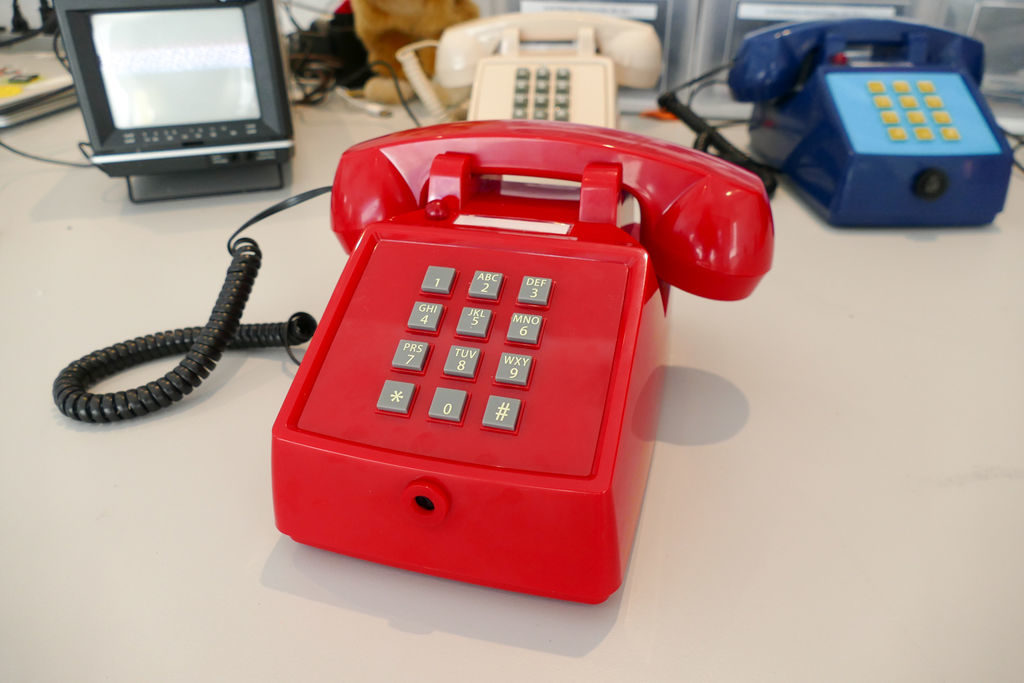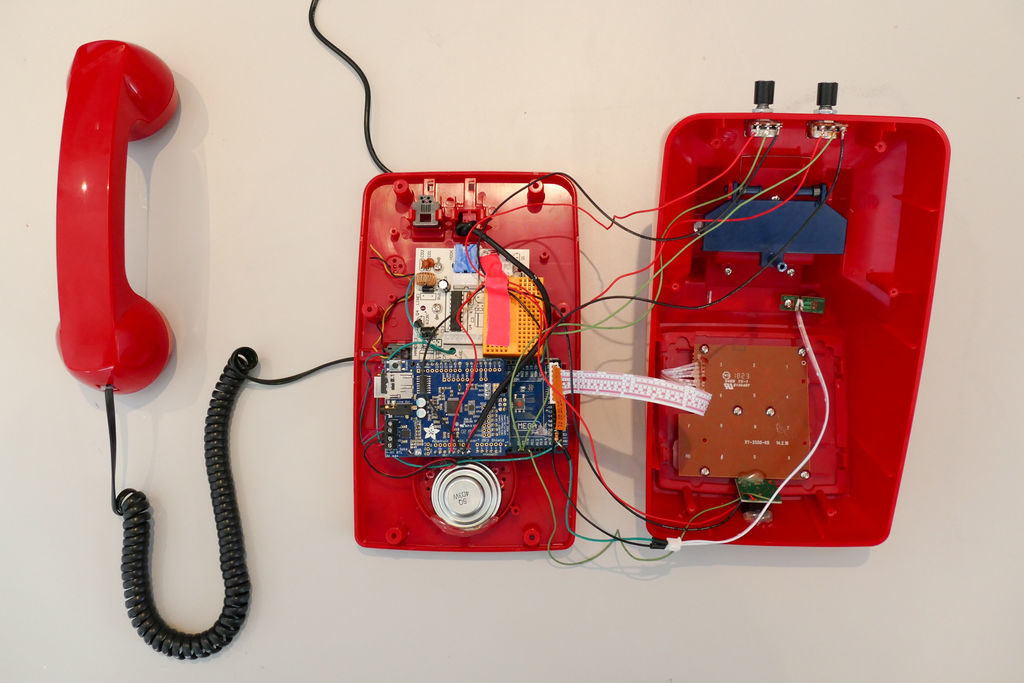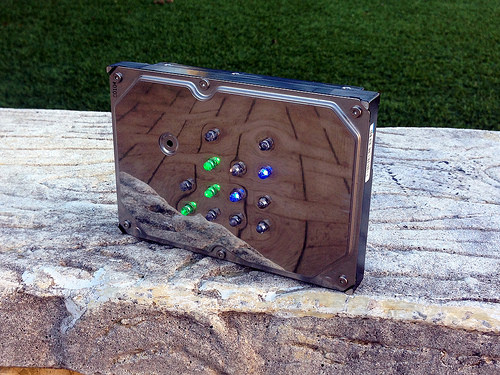Listen to the best of the ‘holdies’ with this Arduino-enabled desk phone

If you’ve ever thought that your life needs a little more hold music in it, then this Greatest Holdies phone from FuzzyWobble could be just the thing.
The heavily modified device uses the shell of an old-style desk phone, but adds an Arduino Mega, a Music Maker Shield, and an ultrasonic rangefinder for “enhanced” abilities.

Now, when someone comes near the phone, it rings automatically, treating the person curious enough to pick it up to a selection of hold music. Users can choose the tune playing via the phone’s keypad, which is wired into the Arduino, along with the original headset switch that detects when the phone has been picked up.
Code for the build is available here, but be sure to check out the video below to see what you might be getting into!



